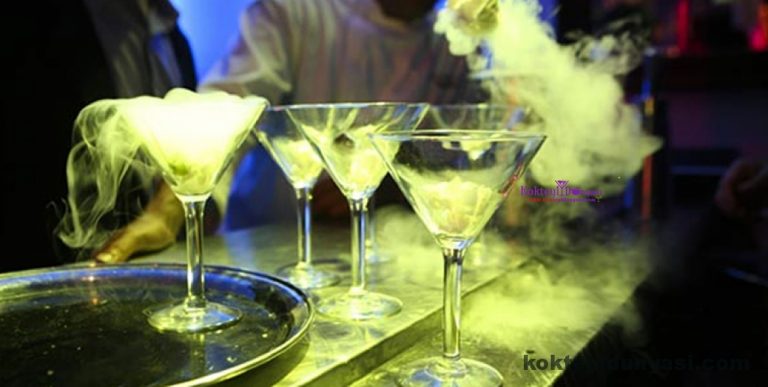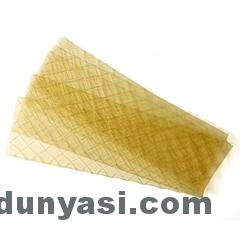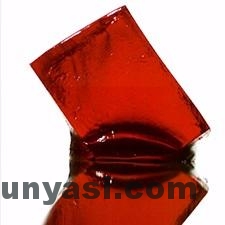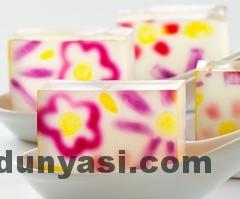
Gelatin: A Versatile Animal-Derived Gelling Molecule

Origin: Gelatin, an animal-derived, heat-
sensitive gelling molecule, finds applications in molecular gastronomy, confectionery, and even cocktail making. It is obtained through the hydrolysis of collagen, the most abundant observable animal protein. Hydrolysis, the denaturation process of any substance using water, is employed in gelatin production
.
Industrial gelatin is primarily derived from bovine hides and bones. These materials undergo boiling in alkaline solutions to stabilize the collagen they contain, resulting in gelatin formation. The obtained gelatin solution has its fats removed, and the remaining solution is processed into powder through evaporation, filtration, and drying.
The by-products of bovine origin used in gelatin production adhere to the quality and safety standards applied in beef production.

Properties: Gelatin’s multiple properties offer a broad range of applications. As a hydrocolloid, this molecule slows down the fluidity of aqueous solutions, inducing textural changes. Gelatin exhibits thermoreversible gelation, meaning it can be melted again at high temperatures. The firmness of gels formed by gelatin is evaluated using the “Bloom” scale. Gelatin serves as both a gelling and emulsifying molecule. Additionally, it is used for water retention, emulsion stabilization, and forming protective films.
A key characteristic of gelatin is its thermoreversible gel formation. Gelatin is dissolved in liquids at approximately 50°C and then cooled below 15°C. In contrast to agar agar, gelatin begins melting at around 35°C, providing the beloved quick-melting feature in the mouth.

Gelling properties can be balanced with high amounts of salt, acid, or alcohol. Gelatin should not be added to boiling solutions or frozen as it can lose its properties at high temperatures.
Industrial Applications: Gelatin finds diverse applications, such as in the silver halides suspended by gelatin on the surface of photographic films since the early days of photography. Additionally, it is used in pharmaceutical capsules, instant soups, low-fat margarine, cream, cheese, and other dairy products. Gelatin is employed in clarifying fruit juices and wines due to its ability to settle sediments.
Creative Culinary Uses: Gelatin’s smoothness, shine, and flavor compatibility make it a staple in many popular meat dishes, vegetable aspics, emulsifications, gels, mousses, panna cotta, and more. Gelatin is widely used not only in industrial confectionery and pastries but also in household applications. Its gelling property is crucial in stabilizing and enhancing the texture of marshmallows and other soft candies. Adding 0.5% gelatin to liquid solutions during the ice cream process results in smaller ice crystals, providing a smoother texture to ice cream and frozen desserts.
Creative Cocktails: Gelatin can maintain its unique characteristics in solutions with an alcohol content of less than 40%. This makes it suitable for creating visually appealing cocktails with distinctive textures. Gelatin allows the presentation of alcoholic solutions that melt in the mouth as small, nibble-sized gels. However, in the case of gelatins that require heating, attention should be paid to maintaining the solution’s alcohol content to prevent it from losing its properties.
To overcome this issue, hydrolyzed gelatin that dissolves in cold water can be used. Cold-water-soluble gelatin dissolves instantly in alcohol without requiring temperature control. To ensure even distribution, the volume of cold-water-soluble gelatin should be mixed with twice the volume of another soluble powder. Powdered sugar is commonly used for this purpose.
Tips:
- Gelatin is usually sold in powder or leaf form. Leaf gelatin should be soaked in cold water, allowing it to swell and regain water before being distributed homogeneously in solutions heated to 50°C. Apart from this process, leaf gelatin can be made ready for use by squeezing out excess water and heating it in a microwave. Powdered gelatin can be added directly to hot liquids without any additional processing.
- Certain raw fruits may contain enzymatic disruptors that break protein chains, potentially neutralizing gelatin’s gelling effect. Therefore, fruits like figs, peaches, kiwi, pineapple, mango, papaya, guava, etc., should be briefly cooked by holding them under hot water or subjecting them to steam before the gelling process.